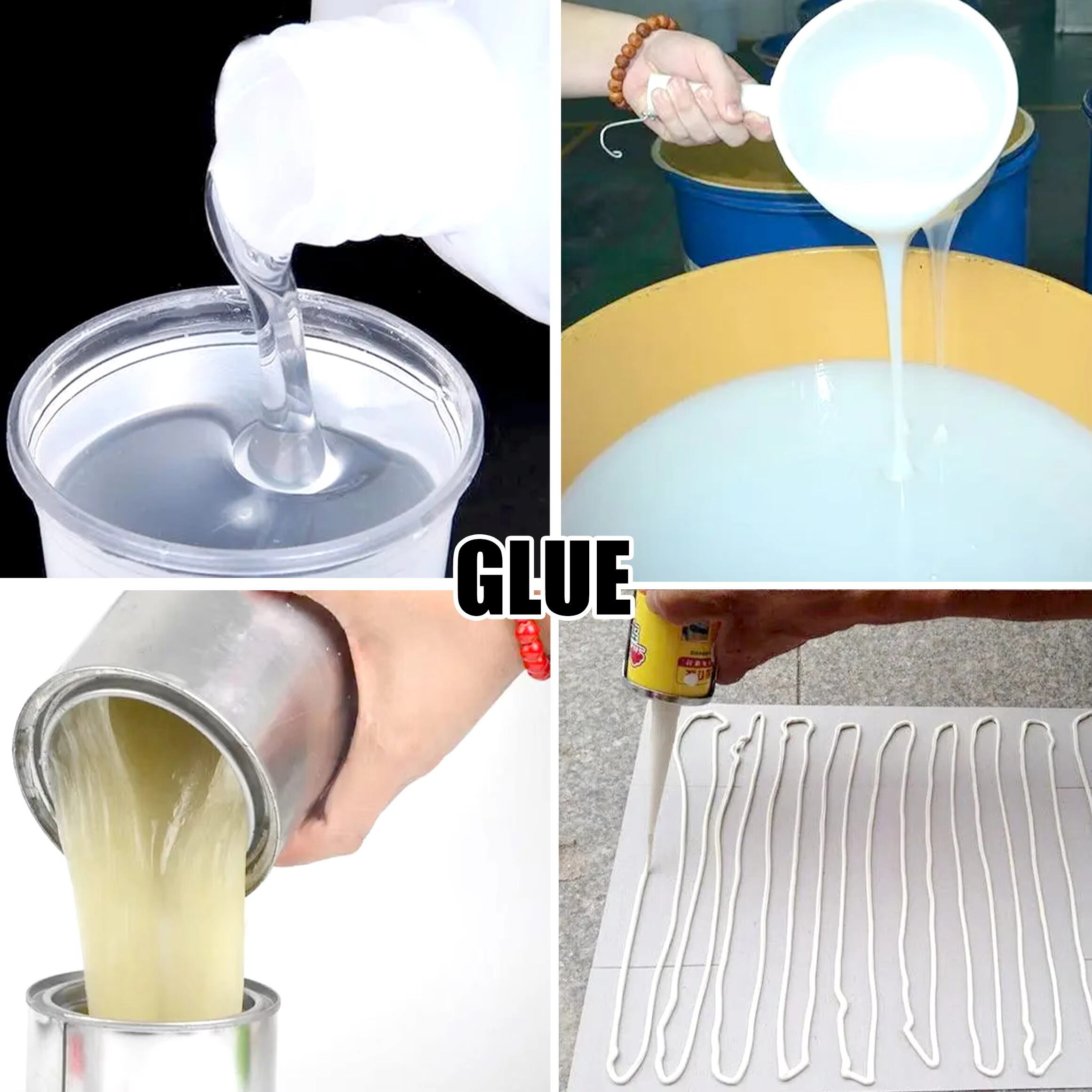Core Factors Defining HPMC Grades
Viscosity Variations Across Grades
The viscosity of Hydroxypropyl Methylcellulose (HPMC) plays a big role in how it works across various industries. Different HPMC grades come with varying levels of thickness, which determines what they can do and where they fit best. Take low viscosity options, usually between 100 and 2000 mPas. These work well when something needs to spread easily over surfaces, making them popular choices for things like paint coatings and glues. Medium grade products sit around 2000 to 5000 mPas and tend to be used wherever mixing consistency matters most. Construction workers rely on these for stuff like mortar mixes and tile adhesive applications because they hold together nicely without being too runny. Then there are high viscosity grades above 5000 mPas that really excel at holding onto water. Contractors love these for jobs involving self-leveling floors or special cement finishes since moisture control becomes so important during curing processes. Most manufacturers clearly mark these viscosity ranges so buyers know exactly which product matches their particular project requirements.
Manufacturers have observed significant differences in viscosity among various HPMC grades. Take tile adhesives for instance they work best around 5000 cP viscosity level. But when it comes to cement based renders, higher viscosity around 15,000 cP tends to perform much better. The importance becomes even clearer in pharmaceutical applications where precision matters most. Different HPMC viscosities aren't just about making things thicker they actually help regulate how fast drugs get released into the body. Getting this right makes all the difference in ensuring products work properly no matter what industry they end up in.
Degree of Substitution Impact on Properties
How much substitution occurs (called DS) really determines what kind of properties HPMC ends up having, affecting everything from how it looks physically to how it behaves chemically. Basically, DS measures how many hydroxyl groups get swapped out for methyl and hydroxypropyl groups on those cellulose molecules. When these substitutions happen, they change several important traits like how soluble the material becomes, whether it forms gels, and if it can create good films. Take it this way: when there's lots of substitution going on, we get a polymer that repels water better because it becomes more hydrophobic. But cut back on substitution and things flip around the other way, making the material more water loving which means it dissolves easier in water.
The degree of substitution (DS) plays a big role in determining how hydroxypropyl methylcellulose (HPMC) functions across various uses. When DS levels go up, the polymer gets better at creating films and gels, which makes it ideal for things like tablet coatings in medicine where we need drugs to release slowly over time. On the flip side, when DS is lower, the material becomes much more soluble in water. This property works well in cosmetics and skin care products because they often require ingredients that dissolve quickly while still holding onto moisture. Small tweaks to DS values can actually make a huge difference in how HPMC performs, allowing manufacturers to create customized versions for everything from food processing to construction materials depending on exactly what properties they need most.
In essence, calculating the right degree of substitution is crucial for optimizing the efficiency and versatility of HPMC. By understanding DS and its effects, manufacturers can innovate formulations tailored to specific needs, thereby improving application outcomes across sectors like pharmaceuticals, construction, and cosmetics.
Low Viscosity HPMC Grades and Applications
Pharmaceutical and Food Industry Uses
Low viscosity HPMC has become essential in pharmaceutical manufacturing, serving primarily as a binder and creating protective films around tablets and capsules. When applied during coating processes, this material forms a smooth layer that not only speeds up production but also gives finished products their professional look. Moving over to food applications, manufacturers rely heavily on low viscosity HPMC for making gluten-free items taste better and hold together properly. The substance mimics gluten's stretchy qualities by holding ingredients together and giving dough-like consistency to batter mixtures. Market research shows significant growth in food grade HPMC sales worldwide, mainly because consumers want more alternatives to traditional wheat-based foods. As people continue seeking out gluten free options, demand for these specialized additives keeps rising steadily across multiple sectors.
Benefits in Detergents and Cosmetics
When it comes to detergents, low viscosity HPMC brings several advantages to the table. It helps create better thickness while keeping particles suspended evenly throughout the solution, something that's really important for getting consistent cleaning results every time. Detergent manufacturers find this property extremely useful because it prevents sediment buildup at the bottom of containers. Moving over to cosmetics, many lotions and face creams actually contain low viscosity HPMC too. The substance acts as an emollient, making these products glide on smoothly and lock in moisture much better than they would otherwise. Industry reports show that more brands are starting to include HPMC in their green beauty lines lately. These companies appreciate how the ingredient supports sustainable practices without making their products feel cheap or perform poorly compared to traditional formulas.
Medium Viscosity Grades for Construction
Tile Adhesives and Mortar Enhancement
Medium viscosity hydroxypropyl methylcellulose, commonly known as HPMC, has become essential in modern construction projects, particularly when working with tile adhesives. When mixed into adhesive formulas, this particular grade of HPMC makes the material much easier to spread across surfaces while also creating stronger bonds between tiles and whatever they're being attached to. For masonry work too, medium viscosity HPMC really shines during those critical early stages where mortar sets and cures properly. Contractors notice better results overall because the material holds together longer without cracking or breaking down. Industry reports show that builders are increasingly turning to HPMC solutions for their tile and mortar needs these days. The improved performance characteristics simply make good business sense, which explains why we see more demand for medium viscosity options on construction sites around the world.
Water Retention in Cement-Based Products
Medium viscosity HPMC plays a key role in keeping cement mixes at the right moisture level during curing, something absolutely necessary for good hydration and building strength properly. When builders add HPMC to their cement products, these materials hold onto water much longer than usual, which means stronger and tougher final results. Research from several different studies backs this up, showing that cement gets noticeably stronger when mixed with HPMC. All these improvements make construction work faster and more effective overall. Cement products containing HPMC let workers control how water moves through the material during setting, so buildings end up being both solid and dependable in the long run. That's why many contractors now consider medium viscosity HPMC an important component for most cement based projects they undertake.

High Viscosity HPMC Specialized Uses
Self-Leveling Compounds and Exterior Putties
When working with self-leveling compounds, high viscosity Hydroxypropyl Methylcellulose or HPMC really helps improve how these materials flow and level out during application. For anyone trying to get those smooth, even surfaces on floors, getting the right consistency matters a lot. That's exactly what high viscosity HPMC does best it keeps things flowing properly while minimizing those annoying little bumps and ridges that show up after pouring. Outside applications benefit too since this type of HPMC works well in exterior putties. It sticks better to surfaces and gives materials some give so they can handle changes in weather without cracking or peeling. Think about all those temperature swings we see outdoors, plus rain and humidity fluctuations. Contractors have noticed this trend over time, especially in niche markets where specific performance requirements exist. More builders are turning to high viscosity HPMC solutions because they just work better for many different types of construction jobs facing tricky conditions.
Controlled-Release Drug Formulations
High viscosity HPMC plays a key role in creating controlled release drugs that work over extended periods. When this material forms matrix structures inside tablets, it lets active ingredients escape slowly from the pill, so patients get their medicine at a steady rate throughout the day. This means fewer doses required, which makes treatment easier for people to stick with. Traditional methods just don't hold up as well against HPMC when it comes to keeping release rates stable. The difference matters because sudden spikes in medication levels can cause unwanted reactions. Numerous tests have shown HPMC works across many different types of medicines, making it an essential component for reliable drug delivery systems today. More and more companies are turning to HPMC now that they see how it helps maintain consistent performance while meeting regulatory standards for quality control.
Selecting HPMC Grades: Key Considerations
Matching Specifications to Application Needs
Getting the right hydroxypropyl methylcellulose (HPMC) grade makes all the difference when it comes to how well things perform in their intended applications. When picking out HPMC, folks need to look at several key factors including what kind of viscosity they want and whether something dissolves easily or not. Take thickening agents for example. High viscosity grades work great there because they form films and provide that needed thickness. On the flip side, if something needs to dissolve quickly, then low viscosity options make more sense. Environmental stuff matters too. Temperature changes and humidity levels can mess with how different grades interact within formulations. We've seen this happen plenty of times in real world settings where improper grade selection led to problems down the line. Manufacturers should keep these variables front of mind during the selection process.
Assess application requirements including viscosity and solubility. Consider environmental factors impacting the product. Evaluate formulation compatibility with other ingredients. Manufacturers can benefit from creating a checklist or consulting industry experts for guidance.
Cost Efficiency and Performance Trade-offs
Selecting the right HPMC grade usually means walking a fine line between what's affordable and what actually works well. Buying large quantities of HPMC can definitely cut down expenses, but sometimes this comes at a price when certain applications need particular properties from the material. Cheaper options often fall short in situations where performance matters most, such as in high precision manufacturing processes. Looking at industry data reveals several HPMC grades that stand out for delivering solid returns because they perform reliably across different sectors including building materials, medicine production, and even food processing. Making smart choices here requires understanding both budget constraints and technical requirements.
Compare costs between bulk purchases and required grade specifications. Analyze the performance trade-offs involved in selecting lower-cost grades. Review market trends for insights into cost-effective HPMC investments. Understanding these nuances ensures manufacturers select HPMC grades that maximize both cost efficiency and product performance.
FAQ
What is the importance of viscosity in HPMC grades?
Viscosity determines the spreadability, coverage, and functionality of HPMC in various applications, such as coatings, adhesives, and construction materials.
How does the degree of substitution affect HPMC properties?
The degree of substitution impacts HPMC's solubility, gel formation, and film-forming capabilities, altering its hydrophilicity or hydrophobicity based on substitution levels.
Why is low viscosity HPMC preferred in pharmaceutical and food industries?
Low viscosity HPMC is used for its binding and film-forming properties in tablet formulations and as a thickening agent for gluten-free food products.
How does medium viscosity HPMC improve construction materials?
Medium viscosity HPMC enhances adhesion and curing in tile adhesives and mortars, providing better durability and moisture retention in cement-based products.
What role does high viscosity HPMC play in specialized applications?
High viscosity HPMC is utilized for its superior flow properties in self-leveling compounds and its ability to create controlled-release drug formulations.
Table of Contents
- Core Factors Defining HPMC Grades
- Low Viscosity HPMC Grades and Applications
- Medium Viscosity Grades for Construction
- High Viscosity HPMC Specialized Uses
- Selecting HPMC Grades: Key Considerations
-
FAQ
- What is the importance of viscosity in HPMC grades?
- How does the degree of substitution affect HPMC properties?
- Why is low viscosity HPMC preferred in pharmaceutical and food industries?
- How does medium viscosity HPMC improve construction materials?
- What role does high viscosity HPMC play in specialized applications?
 EN
EN
 AR
AR
 CS
CS
 DA
DA
 NL
NL
 FI
FI
 FR
FR
 DE
DE
 EL
EL
 HI
HI
 IT
IT
 JA
JA
 KO
KO
 NO
NO
 PL
PL
 PT
PT
 RO
RO
 RU
RU
 ES
ES
 SV
SV
 IW
IW
 ID
ID
 SR
SR
 SK
SK
 UK
UK
 VI
VI
 HU
HU
 TH
TH
 TR
TR
 AF
AF
 MS
MS
 CY
CY
 IS
IS
 BN
BN
 LO
LO
 LA
LA
 NE
NE
 MY
MY
 KK
KK
 UZ
UZ


